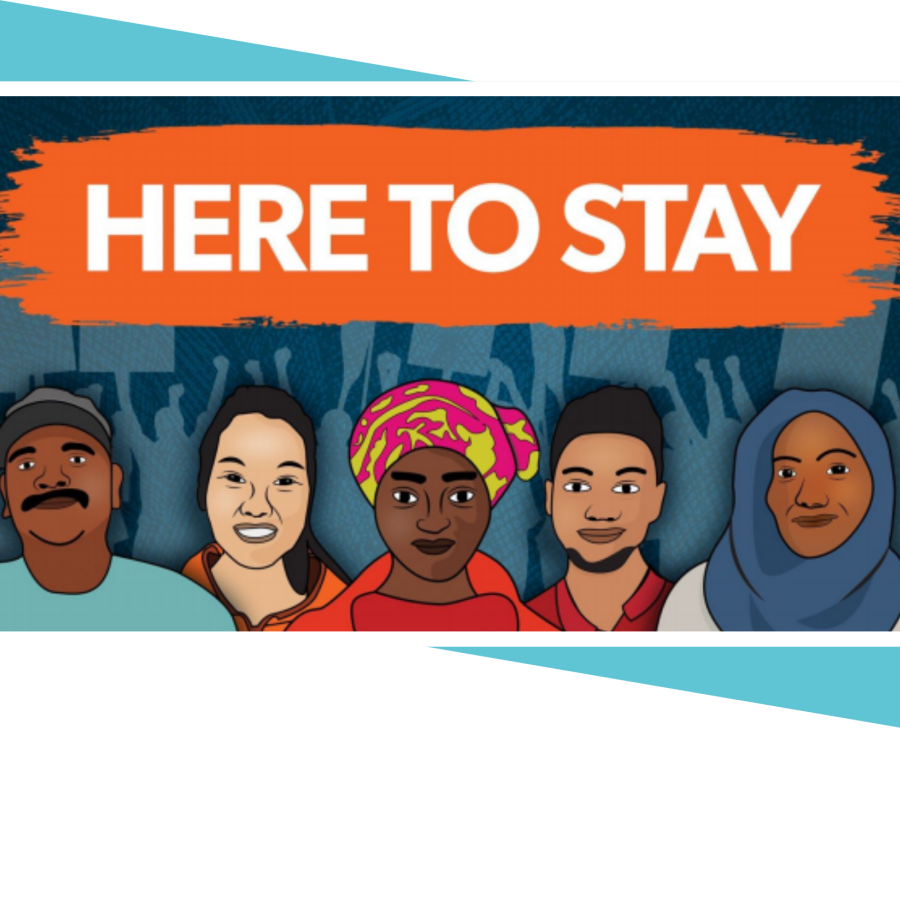Indicator
Mixed-status Families:
Many Californians live in households with family members who have different citizenship or immigration statuses.
Each indicator page features a series of charts, insights and analysis, case studies, and related indicators.
Insights and Analyses
Immigration enforcement policies targeting undocumented individuals have ripple effects on families and in turn family members, including children—many who are U.S. citizens. In 2021, 20% of all individuals under 18 in California were living in mixed-status families, meaning they were undocumented themselves or living with someone who was.
Across California, as of 2021, more than 3.3 million people (U.S. citizens and lawful residents) live in mixed-status families with undocumented immigrants.
Among those living in families, Latinos and Asian Americans are the groups with the largest share of individuals who were undocumented themselves or living with someone who was: nearly 30% of Latinos and 15% of Asian Americans statewide as of 2021.
The “public charge” rule has long created “chilling effects” for immigrant communities, meaning that many immigrants and their families are dissuaded from accessing services or resources due to fear of jeopardizing their path to legal status—even when the public charge rule does not apply to them. Research conducted by the UCLA Center for Health Policy Research found that in 2019, 1 in 4 low-income immigrant adults in California did not use public benefits—such as Medicaid assistance—out of fear and confusion. This was the same year that the Trump administration made changes to the 1999 definition of “public charge” expanding the list of services that would be deemed a public charge, creating further confusion and challenges for immigrant families. In March 2021, the Biden administration halted compliance with the Trump-era rule and on September 2022 published a final “public charge” rule that went in effect on December 23, 2022, codifying the 1999 rule and applying some protections for immigrants. Yet, the impact of the changes under the Trump administration will be long-lasting, and many organizations and advocates continue to urge the government against enforcing exclusionary immigration policies such as this one.
The impact of deportations has ripple effects beyond the individual, affecting households, extended family members, neighbors, employers, and employees. A national study in 2017 by the Center for Migration Studies of New York assessed the economic impact of removing an undocumented resident from a mixed-status household and revealed that the median household income can decrease from $41,300 to $22,000, pushing families further into poverty.
Beyond the economic impacts, deportations separate parents from their children. A 2020 study found that children were more likely to experience psychological, physical, social, and educational problems following their parents’ deportation.
In December 2023, a federal court approved a settlement that limits the separation of underaged children from their families at the border for the next eight years, temporarily putting an end to the Trump-era blanket “zero tolerance” family separation policies. A 2021 study found that parents and children who had been separated under the U.S.’s 2017-2018 “zero tolerance” policy showed numerous negative mental health outcomes such as post-traumatic stress disorder, depression, and anxiety, even after reunification.
The ongoing efforts to rescind the Deferred Action for Childhood Arrivals (DACA) program continue to threaten the livelihood of 149,790 young undocumented immigrants (as of December 2024) in California who are DACA recipients.
Implemented in 2012 by the U.S. Department of Homeland Security (DHS), DACA allows a fraction of undocumented youth in the U.S. to defer their deportation, apply for a work permit, and apply for advanced parole (a travel abroad permit under specific circumstances). Existing research shows that DACA allows young undocumented individuals to participate in and contribute to the labor market, pursue higher education, and contribute to the local, regional, and national economy. Indeed, a 2023 national study of DACA recipients in the U.S. found that about 94% of respondents were employed; nearly 50% of respondents not currently in school have a bachelor’s degree; and nearly 30% purchased their first homes in 2023. Further, research underscores the importance of the life course timing of DACA and the greater social inclusion and benefits within reach for younger recipients. Yet, the program has continued to be disputed in the court since 2017, when the Trump administration made its first attempt to rescind the program. Although the U.S. Supreme Court deemed the manner of the program’s termination unlawful in June 2020, litigation continues. This litigation has prevented the program from expanding and continues to create an uncertain future for those enrolled in the program. Two cases, one in Texas and another in New York, have had national implications. While the case in Texas has been a longer legal battle, the New York case, which ended in 2022, was focused on asking the court to allow a smaller group of those stuck in the legal limbo of applying for renewals or new DACA applications. Unfortunately, the New York court denied plaintiffs any relief.
For years, the state of Texas has been challenging the legality of DACA in the courts in an ongoing case called Texas, et al. v. Texas or ‘the Texas case’. Since 2018, the Texas case has been argued in front of U.S. Federal District Judge Andrew Hanen, whose rulings prevented USCIS from accepting first-time applicants, and also in the higher fifth circuit court of appeals. The first ruling by Judge Hanen against DACA was appealed and move up to the fifth circuit court in 2021, when the “Biden memo” attempting to preserve DACA was issued but was sent back to Judge Hanen in 2023 who again issued a similar ruling against DACA limiting new applicants but allowing DACA renewals. The Texas case was again appealed by MALDEF and Ropes & Gray LLP, representing nearly two dozen DACA recipients, and sent back to the fifth district circuit court in 2023 where oral arguments were heard in 2024. In January 2025, there was a mixed decision by the Fifth Circuit court which allows those with DACA to continue to hold the temporary status and be able to renew DACA in all states, providing protection from deportation. In addition, those seeking DACA status should be allowed to apply for it in the future. However, the court limited its decision on the legality of work authorization to all states except for Texas, meaning that the DACA program may provide protection from deportation but not work authorization in the state. As of May 2025, Judge Hanen in the district court was tasked with determining implementation of this new decision. Attorneys and advocates have shared that applications for DACA renewals and accompanying applications for employment authorization will continue as we await Judge Hanen’s guidance, though it is unclear when USCIS will process new applications. Read the full decision on the USCIS website, linked here.
While granting temporary relief for a subset of immigrant youth, DACA does not provide a pathway toward legal permanent status or citizenship, leaving many futures in limbo. In addition, it is important to consider the growing pool of young undocumented immigrants who are not eligible for the program and those who are still unable to file a first-time DACA application. The Migration Policy Institute estimates that about 343,000 individuals are eligible for DACA under the program’s original eligibility requirements, but are unable to apply due to the ongoing restrictions. Beyond the fight to preserve DACA, immigrant families have also been advocating for comprehensive solutions that lead to permanent legal status and citizenship for all. For updates on the status of the program and policy proposals visit the National Immigration Law Center (NILC).
Photo credit: United We Dream
The Mixteco/Indígena Community Organizing Project (MICOP) is a key grassroots organization working to support, organize, and empower Indigenous migrant communities in California’s Central Coast region – including Indigenous migrant youth.
Organizations like MICOP and their partners estimate that there are about 20,000 Indigenous Mixteco migrants from Mexico living in Ventura County in the Central Coast. Many such Indigenous migrants in California have been misrecognized as Latinx and assumed to be Spanish speakers at school and at work, when in reality many are not proficient in either English or Spanish. This has contributed to a lack of access to educational, working, and health infrastructures, even in areas with more concentrated Indigenous migrant populations.
Work by scholars sheds light on the challenges and discrimination that Indigenous youth, in particular, face – particularly in the school system. In this context, it is not uncommon for Indigenous migrant youth to be tracked into special education classes, even when they do not have a learning disability, hindering their academic progression and participation in the U.S. school system. Further, effective communication between parents and schools can often depend on whether translation is available, so parents’ ability to advocate on behalf of their children is often limited by a lack of translation services (or dependent on another family member being available to translate). As highlighted by a 2020 CalMatters article, educational barriers for Indigenous migrant youth were compounded when schools transitioned to remote learning during the height of the COVID-19 pandemic. On top of the existing linguistic barriers, Indigenous youth had to further contend with the digital divide to access class materials and with economic imperatives to work in the agricultural fields when family members experienced job loss or contracted COVID-19. Many youth featured in that article were members of MICOP’s Tequio Youth Group, which focuses on leadership development to promote Indigenous pride, promotes educational attainment, and advocates against bullying. For example, in 2012, members advocated for the implementation of a policy prohibiting the use of derogatory terms used against Indigenous students in local school districts. In 2014 and 2015, youth also partook in the “Fields to College” campaign, advocating for language resources for both students and their parents in the Oxnard Union High School District. In addition, the group established the Tequio Scholarship Fund to provide funding to Indigenous college students in Ventura and Santa Barbara Counties.
In general, it is important to note that shared languages and cultures are critical components of MICOP’s success in building trust with community members – and as of 2023, 85% of MICOP’s staff are from the Indigenous communities the organization intends to serve. To learn more about MICOP, visit their site here. Read more about MICOP’s other efforts during the pandemic here.
Photo credit: MICOP





